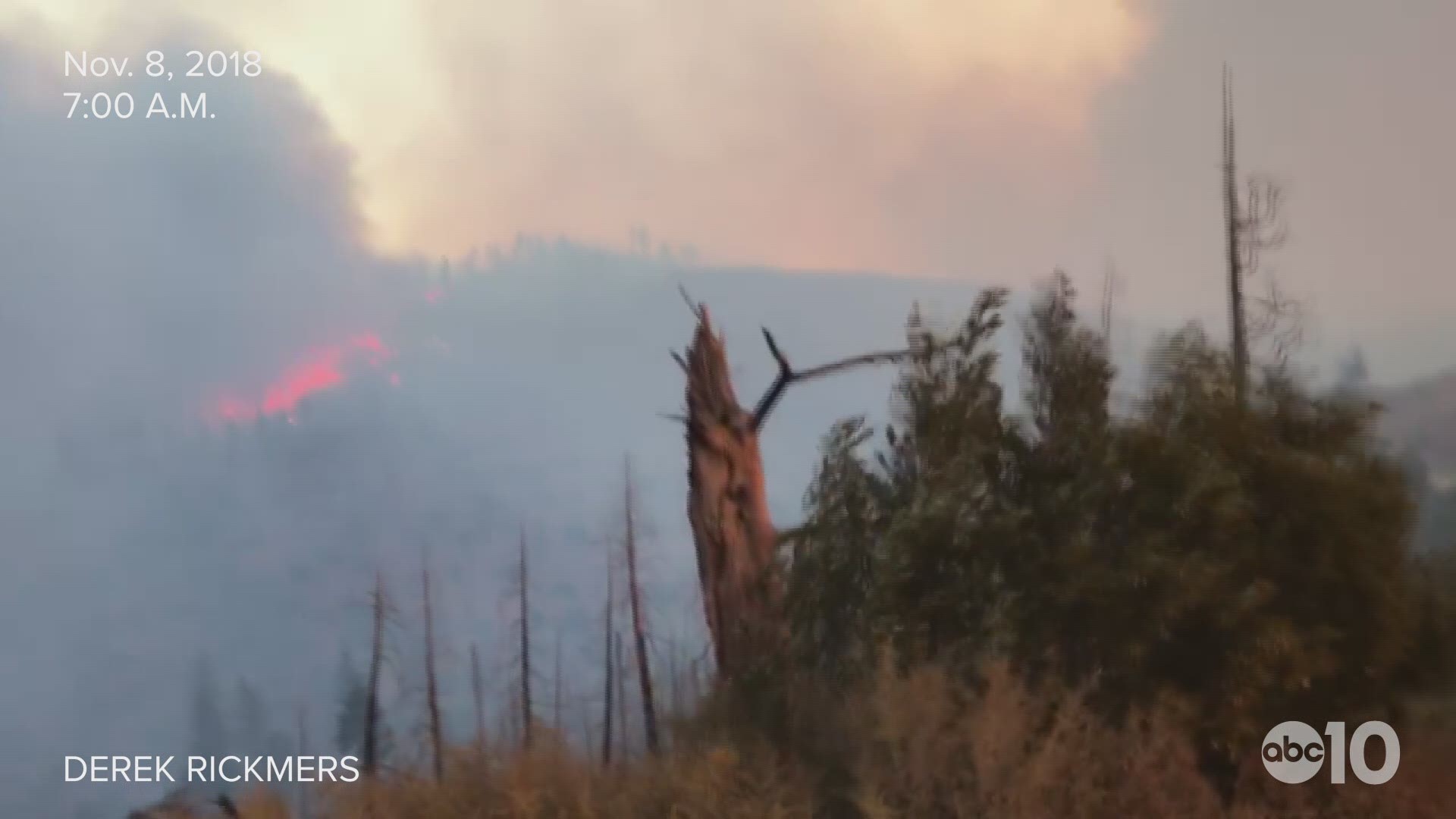SACRAMENTO, Calif. — EDITOR'S NOTE: This article is part of the ABC10 Originals project FIRE - POWER - MONEY, a documentary series that breaks down California’s wildfire crisis into its core elements. In three episodes, we expose the reasons wildfires are deadlier than ever, how PG&E influences our politics despite felony convictions and being blamed for starting fires that killed 107 people, and what it’ll cost to pay for the damage and make California safer from fire.
PG&E held a conference call with news reporters on Wednesday, June 19, to share details about the company's inspection program in the wake of deadly fires started by its equipment in 2017 and 2018.
The company found an “unacceptable” number of safety problems on its lines in fire threat zones and has fixed nearly all of the most urgent problems, according to Sumeet Singh, the PG&E vice president in charge of the inspection program.
Singh promised the company would publicly share detailed information about the issues it found by July 15, 2019. He estimated that 15-20 percent of the most urgent safety problems on transmission lines were located on the Caribou-Palermo line, which CAL FIRE says started the deadliest wildfire in state history. The Camp Fire killed 85 people when it burned down the town of Paradise and surrounding neighborhoods in November 2018.
The Caribou-Palermo line has been shut down permanently as a result of the problems found in recent inspections and PG&E says it is reviewing options to replace its function in the power grid. The line has been de-energized since December, 2018.
Here are some additional, key takeaways from Wednesday's conference call with PG&E:
PG&E ALMOST MET ITS PROMISED TARGETS
Singh argued that PG&E made “substantial compliance” with the wildfire safety plan it turned into state regulators, but not 100 percent compliance. How much of a problem that will be for PG&E is up to the regulators at the California Public Utilities Commission (CPUC) and one federal criminal court judge.
PG&E is currently serving a sentence of probation for six federal felony convictions it earned after the 2010 San Bruno gas explosion. After violating the terms of its probation, Judge William Alsup ordered PG&E, among other things, to comply with the wildfire safety plan it submitted to the state.
Singh said PG&E managed to perform visual or aerial inspections of 98 percent of the high-voltage transmission lines it owns in fire threat zones and 99 percent of the neighborhood-level distribution equipment. It also inspected all of its substations in the fire threat zones.
The company reported that these inspections covered a combined 31,000 miles of line. Inclement weather and higher than normal snowpack prevented PG&E from inspecting every mile of line that it wanted to do.
The company fixed all of the “top priority” problems it found in its substations and transmission equipment and 97 percent of the problems in its distribution equipment, according to Singh.
THEy FOUND A LOT OF PROBLEMS
PG&E said that it found 100 of those top priority problems on its transmission lines, another 100 in its substations and about 1,000 on distribution lines. Those problems included worn hooks, like the one PG&E says was found at the origin point of the Camp Fire, and are serious enough to need immediate repair.
However, there are thousands more problems to fix. Singh says the company estimates it has as many as 4,000 more “secondary” problems that it designates as needing repair within 90 days. A company representative says the data about these secondary problems is still being reviewed.
FIRE SAFETY WILL COST CUSTOMERS
PG&E initially estimated its current wildfire safety efforts will cost $1.7 – 2.3 billion, which it is seeking to pass on to customers. Singh said there’s no final cost yet as the work is ongoing, but that it’s “trending” toward the higher end of the range and may even cost more.
Part of that reason is because PG&E had to hire 2,000 linemen from outside of California to come in and help, which costs more money than hiring people who already live here.
In a recent interview with ABC10, Michael Picker, outgoing president of the California Public Utilities Commission [CPUC], said customers should expect bills to increase in the coming years.
“We are gonna approve more money to all the electric utilities because the world has changed and they’re gonna have to step up their game,” Picker said.
HOW EFFECTIVE ARE THE INSPECTIONS?
After the Camp Fire, PG&E revealed that it had done an aerial inspection of the Caribou-Palermo line only two months before the disaster.
The company told the federal judge that the line should have had a “detailed inspection” every five years and was due for the next one in 2019. The 2014 detailed inspection found no issues on the tower that apparently failed the day the Camp Fire started.
However, the company also reported that it took seven years to replace connectors that were flagged as problematic in the 2009 inspection. Singh told reporters that PG&E is working to digitize its process for handling issues that it finds in inspections, so that repairs don’t get lost in a paper trail.
He did not explain the level of detail that the current aerial imagery is capable of providing to the engineers in charge of reviewing it.

